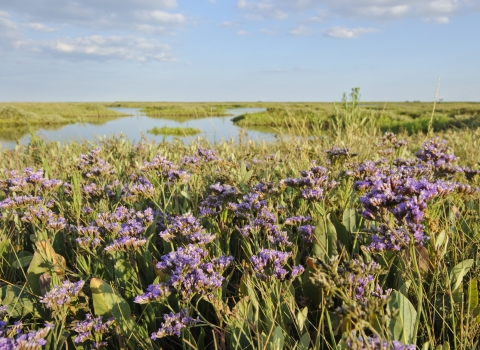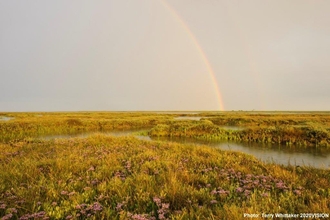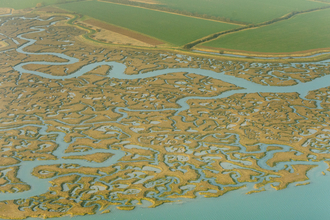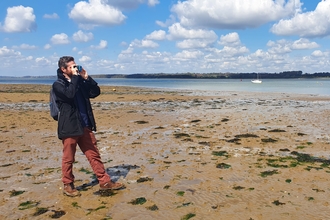Not only do saltmarshes support a huge biodiversity – from tiny critters within the mud, fish in the creeks, to birds on the shore - they also support and protect us. As one of our key allies in fighting the climate crisis, saltmarshes are a key focus of Essex Wildlife Trust's coastal and marine work.
The start of the 'sausages'
In 2018, Essex Wildlife Trust and the Environment Agency kicked off an exciting, low-cost saltmarsh restoration project. We introduced “saltmarsh sausages” (aka coir roll structures) at Abbotts Hall (Blackwater estuary) and Moverons Farm (Colne estuary). These large coir rolls, secured with chestnut stakes and hessian rope, were placed in low-energy channels to trap sediment and encourage lush vegetation growth, capturing carbon in the process.
How are our saltmarsh 'sausages' doing?
Fast forward to 2021, we were thrilled to receive funding from The Wildlife Trust’s Nature-based Solutions Fund and People’s Postcode Lottery, allowing us to take the project to the next level. Partnering with the University of Essex, we used drone flights, mapping, and data analysis to see how our saltmarsh sausages were doing. The results? The structures are now covered in vegetation and sediment, stabilizing the marsh and locking in carbon.
This is a huge win for saltmarsh restoration, but we’re not stopping here. Our ongoing collaboration with the University of Essex aims to gather more data and keep the momentum going.
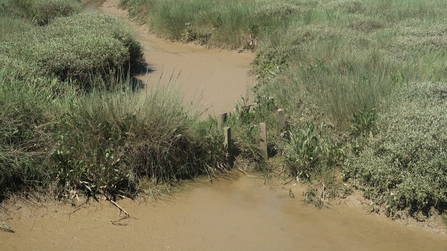
Saltmarsh structure at Moverons Farm, Colne estuary, June 2021
Saltmarsh Restoration Project Toolkit
How can you help?
To combat our climate emergency, we need action now. Through restoration approaches such as this, both nature and people become more resilient to climate change. Our Saltmarsh Restoration Project Toolkit is designed for practitioners and those considering different options for saltmarsh restoration.

